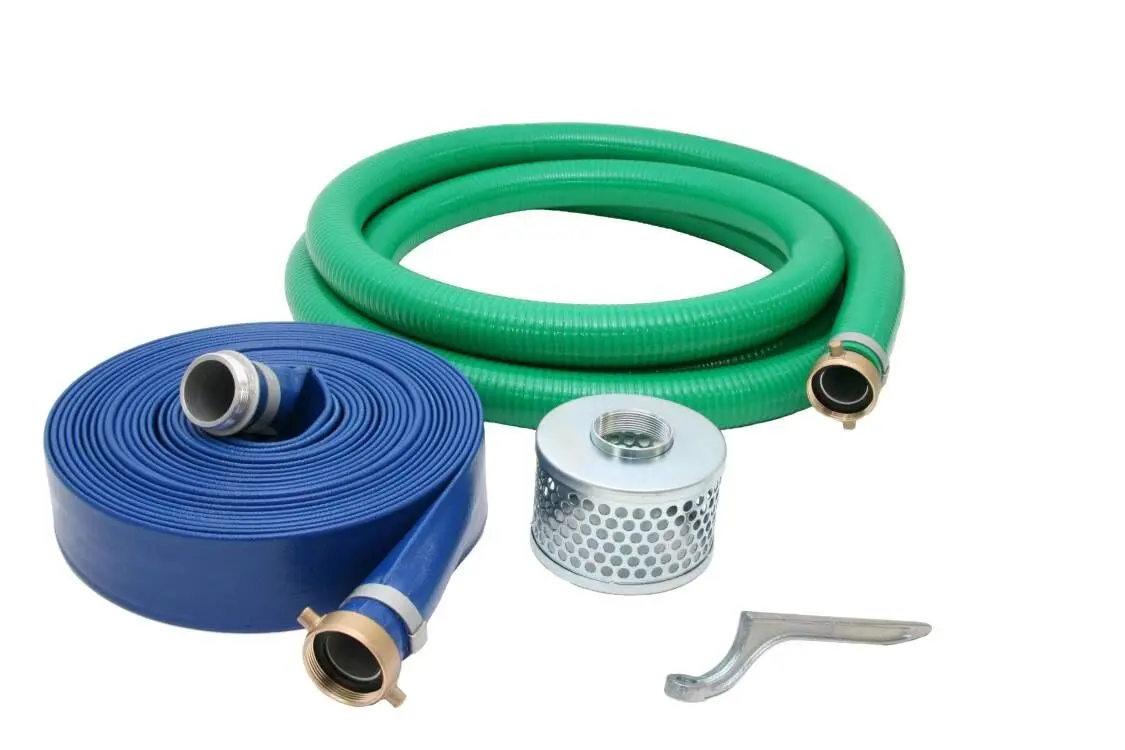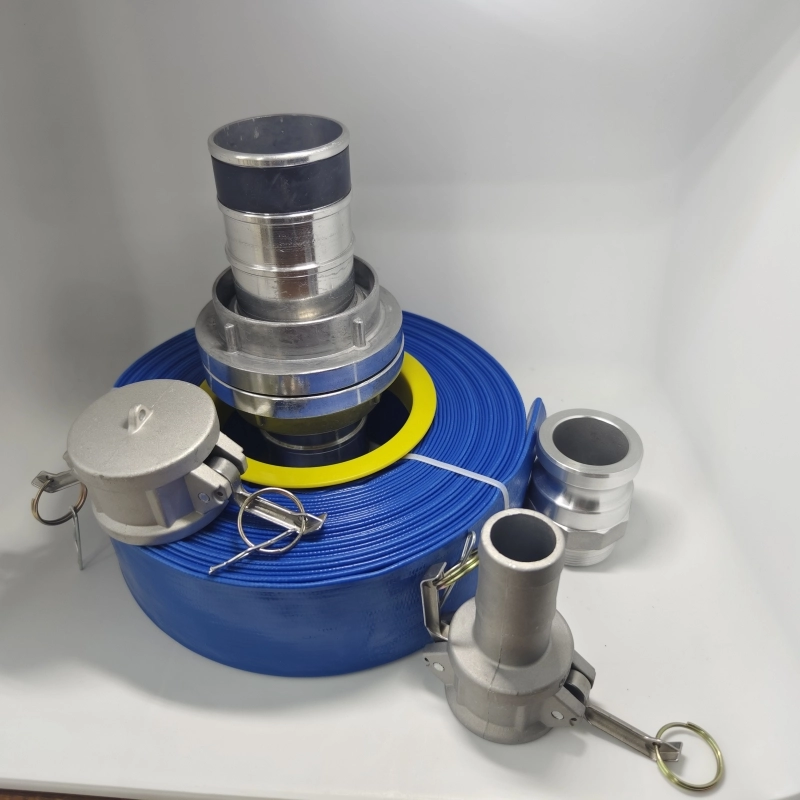Flexible Hose HS Code: A Comprehensive Guide
Flexible hoses are classified under the HS system based on their material, construction, and usage. Flexible Hose HS Code are 3917.21-3917.23, HS Code 4009.11-4009.22,4009.31.If you want to import Flexible hoses, you will know about the Flexible hoses HS code. Today I will introduce it in detail.

Flexible hoses are widely used across industries, including agriculture, construction, and automotive, for fluid and gas transfer. When exporting or importing flexible hoses, understanding their Harmonized System (HS) Code is essential for accurate customs classification, smooth trade operations, and compliance with international trade regulations. This article dives into the HS code for flexible hoses, their classifications, and related trade considerations.
What is a Flexible Hose?
A flexible hose is a versatile and durable conduit designed to transport fluids, gases, or other substances in various industrial, commercial, and domestic applications. Unlike rigid pipes, flexible hoses can bend, twist, and stretch to accommodate movement, misalignment, or confined spaces, making them essential for many industries.
Construction of Flexible Hoses
Flexible hoses are typically constructed using a combination of materials to achieve the desired flexibility, strength, and resistance. The most common components include:
Inner Tube: The core of the hose that comes in direct contact with the transported material. It is often made from materials like:
PVC (Polyvinyl Chloride)
Rubber (Natural or Synthetic)
Polyurethane
Silicone
Stainless Steel
Reinforcement Layer: This layer adds strength and prevents kinking. Common reinforcements include:
Braided textile or polyester fibers
Spiral metal wires
Synthetic yarns
Outer Cover: Protects the hose from external damage, such as abrasion, UV exposure, or chemical corrosion. The material of the outer cover varies depending on the hose’s intended application.
Types of Flexible Hoses
Flexible hoses are classified based on their material, design, and intended use. Common types include:
PVC Hoses: Lightweight and cost-effective, ideal for irrigation, water transfer, and light industrial applications.
Rubber Hoses: Durable and heat-resistant, suitable for heavy-duty industrial and automotive use.
Hybrid Hoses: Combine the properties of PVC and rubber, offering flexibility, lightweight design, and durability.
Stainless Steel Hoses: High-temperature and corrosion-resistant, often used in chemical and food-grade industries.
Silicone Hoses: Flexible and resistant to high temperatures, commonly used in medical, automotive, and food applications.
Hydraulic Hoses: Designed for high-pressure fluid transfer in machinery and equipment.
Layflat Hoses: Flat when not in use, commonly used for water discharge in agriculture and construction.
What is an HS Code?
The HS Code, or Harmonized Commodity Description and Coding System, is an international classification system developed by the World Customs Organization (WCO). It consists of a universal 6-digit code, extended in many countries to 8 or 10 digits for more detailed classification. HS codes enable the standardized identification of products for global trade, ensuring accurate calculation of tariffs and compliance with regulations.
HS Code for Flexible Hoses
Flexible hoses are classified under the HS system based on their material, construction, and usage. The two primary chapters under which flexible hoses fall are:
Chapter 39: Covers hoses made of plastics (e.g., PVC, polyurethane).
Chapter 40: Covers hoses made of rubber or vulcanized elastomers.
The specific HS codes for flexible hoses are:
| HS Code | Description |
|---|---|
| 3917.21 | Tubes, pipes, and hoses of plastics, reinforced with metal. |
| 3917.22 | Tubes, pipes, and hoses of plastics, reinforced with other materials (e.g., fiber). |
| 3917.23 | Tubes, pipes, and hoses of plastics, without reinforcement or fittings. |
| 4009.11 | Rubber hoses, not reinforced, for gas or fluid conveyance. |
| 4009.12 | Rubber hoses, reinforced with metal, for gas or fluid conveyance. |
| 4009.22 | Rubber hoses, reinforced with textile or other materials. |
| 4009.31 | Rubber hoses, for vehicles or hydraulic systems, reinforced with synthetic fibers. |
Factors Determining HS Code for Flexible Hoses
To determine the correct HS code for flexible hoses, several factors must be considered:
1. Material Composition
The primary material of the hose significantly affects its classification:
Plastic-based hoses: Include PVC, polyethylene, or polyurethane hoses.
Rubber-based hoses: Include natural rubber or synthetic rubber hoses.
2. Reinforcement
Hoses with added reinforcement, such as metal wire, textile fibers, or spiral braiding, fall under specific subcategories. For example:
Hoses reinforced with metal fall under 3917.21 or 4009.12.
Hoses reinforced with textile fibers fall under 3917.22 or 4009.22.
3. Usage
The intended use of the flexible hose determines its HS code. For instance:
Industrial hoses for general fluid transfer may have a different code than automotive fuel hoses.
Hydraulic hoses used in machinery are categorized separately.
4. Fittings and Attachments
Hoses with permanent fittings or specialized couplings may have distinct codes or additional classifications.
Common Applications of Flexible Hoses and Their HS Codes
| Application | Material | HS Code | Details |
|---|---|---|---|
| Agriculture Irrigation | PVC | 3917.22 | Flexible layflat or suction hoses, reinforced with fibers. |
| Industrial Hydraulic Systems | Rubber | 4009.12 | High-pressure rubber hoses, reinforced with metal. |
| Automotive Fuel Lines | Rubber | 4009.31 | Synthetic rubber hoses, reinforced for fuel systems. |
| Water Suction and Discharge | PVC | 3917.21 | Spiral-reinforced hoses for fluid transfer. |
| Ventilation or Ducting | Flexible plastics | 3917.23 | Unreinforced PVC hoses for air or light-duty applications. |
| Chemical Transfer | Rubber or polyurethane | 4009.22 | Hoses resistant to chemicals, reinforced with textiles. |
Importance of Accurate HS Code Usage
1. Customs Clearance
Using the correct HS code ensures that flexible hoses are classified appropriately for customs clearance. Incorrect codes can lead to delays, penalties, or rejection of shipments.
2. Tariff Calculation
HS codes determine the applicable import/export duties and taxes. Misclassification may result in overpayment or underpayment of tariffs, which can trigger audits or fines.
3. Trade Agreements and Compliance
HS codes are essential for leveraging free trade agreements (FTAs) and ensuring compliance with international trade regulations.
4. Trade Data Analysis
Accurate HS code usage allows governments and businesses to track trade statistics, monitor market trends, and identify opportunities for growth.
How to Determine the Correct HS Code
To ensure accurate classification of flexible hoses, follow these steps:
Analyze Material Composition: Identify the primary material and any reinforcement layers.
Determine Usage: Understand the intended application, such as irrigation, chemical transfer, or hydraulic systems.
Examine Design Features: Check for fittings, reinforcements, or unique design elements.
Consult Trade Resources: Use online HS code databases, customs tariffs, or professional customs brokers for verification.
Check Local Extensions: Some countries add additional digits to the universal 6-digit HS code for more detailed classification.
Example: Flexible PVC Layflat Hose
For a PVC layflat hose used in agriculture:
Material: PVC (plastic-based).
Reinforcement: Polyester fabric.
Application: Agricultural water delivery.
HS Code: 3917.22 (Plastic hose, reinforced with textile material).
Conclusion
The HS code for flexible hoses varies based on material, reinforcement, and application. Commonly classified under 3917 (plastic hoses) or 4009 (rubber hoses), accurate HS code identification is critical for smooth international trade. By considering the hose’s material, intended use, and additional features, businesses can ensure proper classification, avoid customs issues, and optimize trade efficiency.
Whether exporting agricultural irrigation hoses or importing industrial hydraulic hoses, using the correct HS code is the foundation of successful global commerce.


